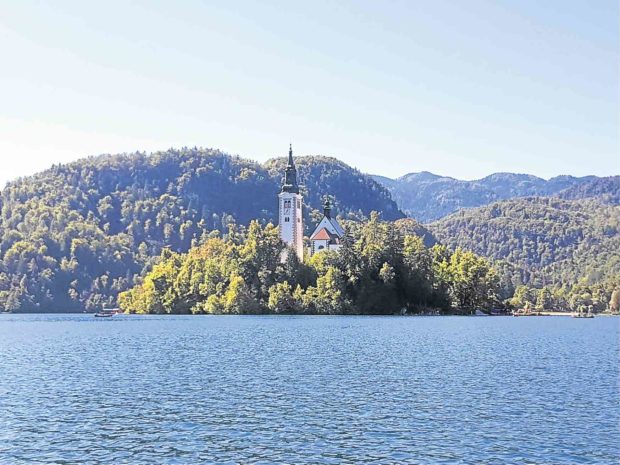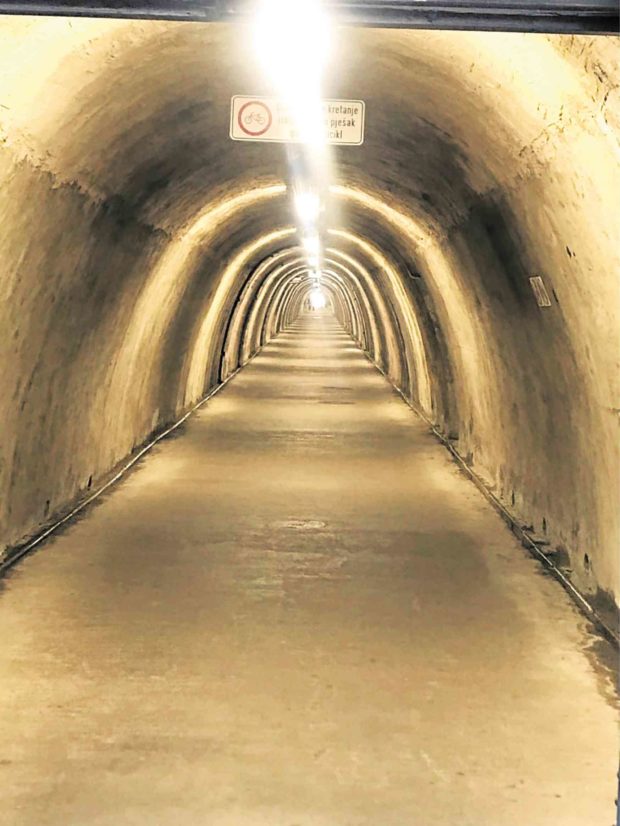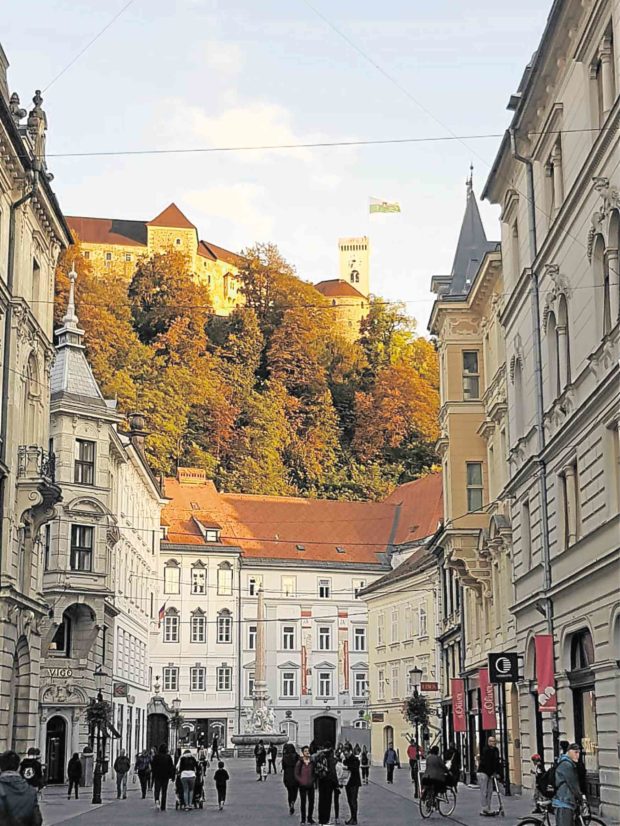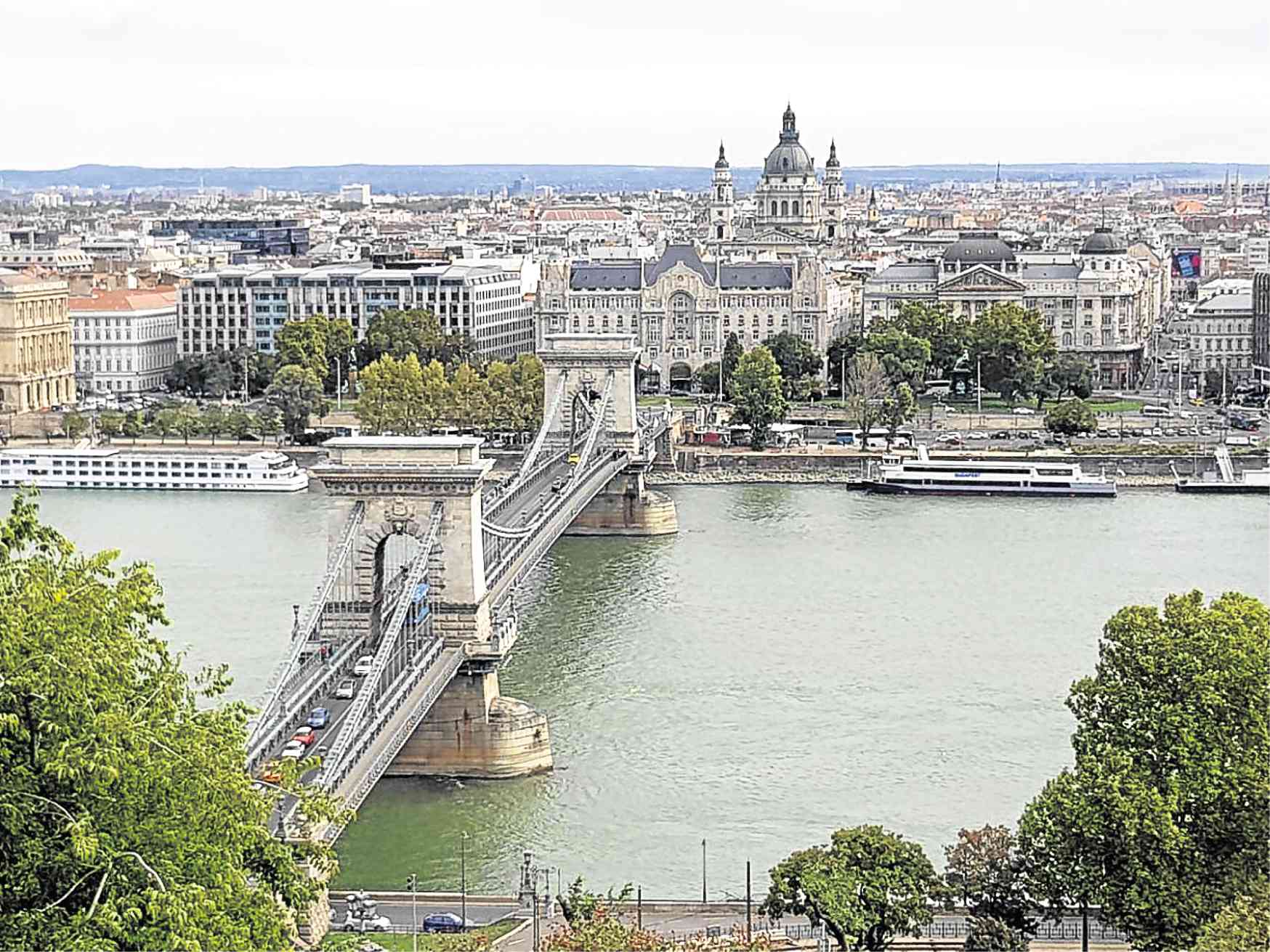
Since the collapse of communism in Eastern Europe at the turn of the 21st century, Hungary, Croatia and the other Balkan states that used to form the Austro-Hungarian empire have been a dream destination for tourists.
So with five friends from the Philippines (Leo Tiopes, Ramon Tan, Dr. Larry Mallari, Rina Rosales and Chris Ecker de Guzman) and five more from the US (Dr. Ting Azarcon, Robert Abrahamsen, Dr. Steve Rualo, Randy Brittingham and Susan Tagle), I decided to tour Hungary, Slovenia and Croatia.
Our first stop was Budapest, the capital of Hungary and the 10th largest city in the European Union. It is also known as the Queen of the Danube.
We arrived early morning. The weather was comfortably cool with wind that sometimes sent shivers to our skin.
Our hotel was in the “happening” street of Kiraly. From there we took a long walk, admiring the architecture of the Jewish synagogue (the largest in Europe and the second largest in the world), and the old buildings along Museum Street where the Hungarian National Museum is.
The next day, we went to visit the other side of Budapest, which is Pest.
Budapest is composed of two cities, Buda and Pest. The cities are divided by the Danube River but connected by eight magnificent bridges. The oldest and most famous of them is the Chain Bridge, with stone lions on the abutments. Locals pointed out the lions had no tongues, but no one could explain why.
We walked the Chain Bridge to catch the bus to go up to Gellert Hill, where Citadella is.
Built in 1851, the Citadella offers stunning views of the city. One can also find the Liberty Statue at the other end of the hill, a large monument erected by the Soviet Red Army to commemorate their victory in World War II.
Later, a boat cruise on the Danube gave us a different perspective of the city; we saw the hotels with their distinct architecture, and the Parliament of Budapest, with its breathtaking Gothic Revival style.

We also passed through Margaret Bridge, a three-way bridge that connects Buda, Pest and Margaret Island.
The day after, we went to the Buda Castle district, where the Hungarian National Gallery had a Frida Kahlo retrospective. St. Matthias Church and the Fisheman’s Bastion are also part of this district.
From the top, we caught another bus to go down the city but this time crossed Elizabeth Bridge, the shortest of the bridges.
Slovenia
In Ljubljana, the capital city of Slovenia, which we reached by van, we came upon the famous Triple Bridge. This bridge connects the medieval town to the modern city of Ljubljana, with its wonderful view of the Franciscan Church of the Annunciation, colloquially known as the Big Pink Church.
Atop a hill, the Ljubljana Castle boasts a 360-degree view of the city. That it happened to be dawn and cold when we were there only added to the ambiance. It was marvelous!

The complex includes a dragon and history of Slovenia exhibits, the St. George Chapel, penitentiary, prison cells, pentagonal tower, viewing tower and a park with a restaurant.
The next day, Laszlo, our Hungarian driver, drove us to Lake Bled. To get to Bled Island, we rented a traditional and locally made pletna boat. Our oarsmen were descendants of the 22 families that were given permission by the Empress Maria Theresa in 1740 to transport religious pilgrims across Lake Bled.
The island is host to a pilgrimage church known as the Assumption of Mary. Weddings are held in the church that can be reached by a staircase with 99 steps. It is considered good luck for the groom to carry his bride up the steps on the day of their wedding before ringing the bell and making a wish inside the church.
Our oarsman Clementine said not a lot of people chose this church for their wedding because they have to carry the bride up the 99 steps for their wish to come true!
From Lake Bled, we drove to Postojna Cave, whose inner sanctum (about 2 km by mine train and another kilometer of walking) led us to different formations of stalactites and stalagmites. Some looked like folded curtains while others resembled spaghetti noodles hanging from the ceiling. The cave is 35,000 meters long and only 40 percent of it has been explored.
Croatia
We started early the next day on our road trip to Zagreb, the capital and largest city of Croatia.
After lunch at Vinodol Restaurant on N. Tesla Street, we walked through Ban Jelacic Square, the central square of the city named after the noted army general who freed Hungary from serfdom in the Hungarian Revolution of 1848.

Up the hill sits the Gothic style Zagreb Cathedral (the Cathedral of the Assumption of Mary). Its sacristy is of great architectural value and its spires are considered landmarks, visible from most parts of the city.
From there we went to the flea market to check on the produce and crafts, then passed by Gric Tunnel to traverse the other side of the city. It was built during World War ll to serve as bomb shelter.
At the other end of the tunnel is a passage that brought us to the other side of the hill where the Lotrscak Tower and Gric Cannon fires a cannon every day at exactly 12 noon. Yes, we heard the loud “boom” and were glad to be part of their day. The Church of St. Mark is in this hill too.
Cravat
Not all people know that the cravat, the short piece of fabric tucked inside a man’s open-necked shirt, was invented by the Croatians. It originated from a style worn by members of 17th-century military units known as the Croats.
The cravat reached Paris in the time of Louis XIII, when Croatian mercenaries were enlisted in the regiment supporting Cardinal Richilieu and the Queen Mother, Maria de Medici. Today, you can find a cravat store all over Zagreb and it makes an excellent souvenir or gift.
A bus took us to one of the most beautiful cemeteries in Europe, the Mirogoj Cemetery. It inters members of all religious groups—Catholic, Orthodox, Muslim, Jew, Protestant, or Latter-Day Saints.
The cemetery was designed by Hermann Bolle, a German national who was behind the numerous structures in Zagreb, including Museum of Arts and Crafts and the Zagreb Cathedral.
Plitvice National Park has 16 lakes renowned for their distinctive colors, ranging from azure to green, gray and blue. There are zones visitors can choose from to go around the lakes. The easiest is the zone that offers vast lakes with little waterfalls here and there.

Go to the big waterfalls first so you have time to go around other places for the day.
Split
Split is a medieval city and home to Diocletian’s Palace. In 1979, it was included on the list of Unesco World of Heritage Sites.
The city is medieval, so it has small streets and only one way all around it.
Our hotel was also small—only 12 rooms—and with no elevator as one cannot be installed inside a Unesco Heritage Site.
The upside to this hotel is that it is inside the Diocletian Complex, the same grounds where Roman Emperor Diocletian walked in 305 AD. The mere thought gave me goosebumps as I explored the complex. It was a surreal feeling, like experiencing life in the past but with today’s modern conveniences.
Our guided tour the next morning began at the North Gate with the big statue of Bishop Gregorius at the entrance. Legend has it that if you rubbed his feet (which I did) your wish would be granted.
We proceeded to the dome which Split’s locals still can’t figure out how it was built. An octagonal building stands to the right of the dome, which is Diocletian’s mausoleum and now a Roman Catholic Church. From there, we walked through the Peristyle, which is the central square within the Palace and then wound up on another plaza on the other side of the palace going out to the promenade. A central square, it’s where you can find all kinds of restaurants, bars, souvenir shops and money changers.
For me, this is the heart of the city of Split; it connects the old with the new and is where tourists and locals converge.
Dalmatia
The next day, while most of my friends went to Trogir, a medieval city one hour’s drive north of Split, Leo, Ecker and I strolled the old city outside the palace complex. We found the Croatian National Theater, which was opened in 1893 and is one of the oldest surviving theaters in Dalmatia. There is also the fish market (peskarija), and more places to shop in Marmontova Street.
From Split, we motored our way to Dubrovnik with our Croatian drivers. They were very nice and accommodating people and laughed like no other. The trip became a talk show as we interviewed our driver about his life. Really, the best way to know a country is through its people.
After a brief coffee break in the small coast that is a part of Bosnia and Herzegovina, we arrived at our villa in Dubrovnik. Going up the villa is a challenge for people who are not walkers. But it was worth it. Our two-story villa had five rooms, two kitchens and two dining areas with a patio and a big garden.
Also a Unesco World Heritage Site, Dubrovnik was the location of the HBO series “Game of Thrones” and “Star Wars: the Last Jedi.” This explains why this once quiet coastal place is now a rocking tourist destination.
Dubrovnik
In our first hour in Dubrovnik, we went to the old town, which is the real Dubrovnik. To express their devotion and gratitude to God, locals built nine churches inside their small walled city, all distinctively beautiful and grandiose in their own way. Marble, silver and gold were not spared to beautify the churches’ altars and decors.
After a day touring “Game of Thrones” locations, we visited Kotor, a medieval town on the Gulf of Kotor in Montenegro. The hour-and-a-half-long drive to this World Heritage Site was smooth and the view fantastic, passing by the mountains along the bay is to die for.
One thing I’m sure about this place is that it’s also full of churches. Every corner there’s a church and I’m most thankful we have something in common with the locals. The walled city was teeming with tourists from a cruise ship and from Dubrovnik who came by the busloads and, like us, by van.
We left Kotor passing by Perast on our way back to Dubrovnik. It’s an old town on the Bay of Kotor noted for its proximity to the islets of St. George and Our Lady of the Rocks. This tiny town has 16 churches and grand palazzos. It is also a Unesco World Heritage Site.
This trip opened our eyes to life during medieval times, the engineering that went into the edifices and structures and the faith that kept the people’s belief in their country and in each other. It is a trip like no other, where you get to walk on the very same grounds that emperors walked.
Through trips like this, you realize that the world is full of pockets of history. Thus, visiting a country is a gift that you will always treasure, especially when done with friends who have traveled with you before and appreciate the same things.
Till our next adventure! —CONTRIBUTED









































